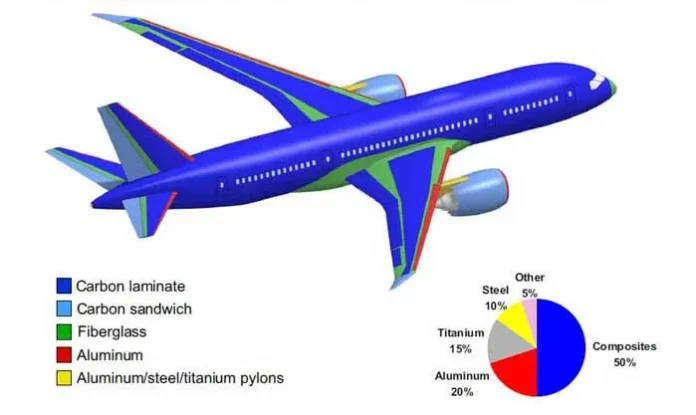In the field of aerospace technology, carbon composites have caused a big change due to their special qualities. But there was a big problem – they don’t conduct electricity as well as regular metals. This situation led to an important question: How can we protect modern airplanes from powerful lightning strikes, which can seriously damage their structure?
Carbon composites are materials made up of carbon fibers embedded in a resin or plastic matrix. They are known for being lightweight, strong, and resistant to corrosion, which makes them ideal for aerospace applications. However, they don’t conduct electricity as effectively as traditional metals like aluminum or copper. This limitation can be a challenge in certain aerospace systems where electrical conductivity is important for various functions.
To solve this problem, engineers came up with a solution. They added a special mesh made of conductive fibers into the layers of these carbon composites. This mesh helps these materials conduct electricity better, making them safer for use in aircraft.
Even though you can’t see this mesh with your eyes, it has a very important job: preventing disasters. When lightning hits, instead of damaging the material by sending electrical energy through it, this hidden mesh skillfully redirects the energy away, keeping the aircraft strong and safe.
Boeing engineer Stephen Henning, a respected figure in the aerospace field, praised this innovation as proof of their strong dedication to passenger safety and new ideas. Extensive testing has shown that their planes can handle lightning strikes very well, sometimes even better than traditional metal-skinned planes.
So, when you’re flying and you see lightning in the sky, remember the incredible engineering that keeps you safe. As Stephen rightly points out, this design makes lightning a beautiful sight in the sky, not a dangerous one.
–The author of this article is a Defence, Aerospace & Political analyst based in Bengaluru. The views expressed are of the author and do not necessarily reflect the views of Raksha Anirveda
-The author is a Defence, Aerospace & Political Analyst based in Bengaluru. He is also Director of ADD Engineering Components, India, Pvt. Ltd, a subsidiary of ADD Engineering GmbH, Germany. You can reach him at: girishlinganna@gmail.com. The views expressed are personal and do not necessarily carry the views of Raksha Anirveda






